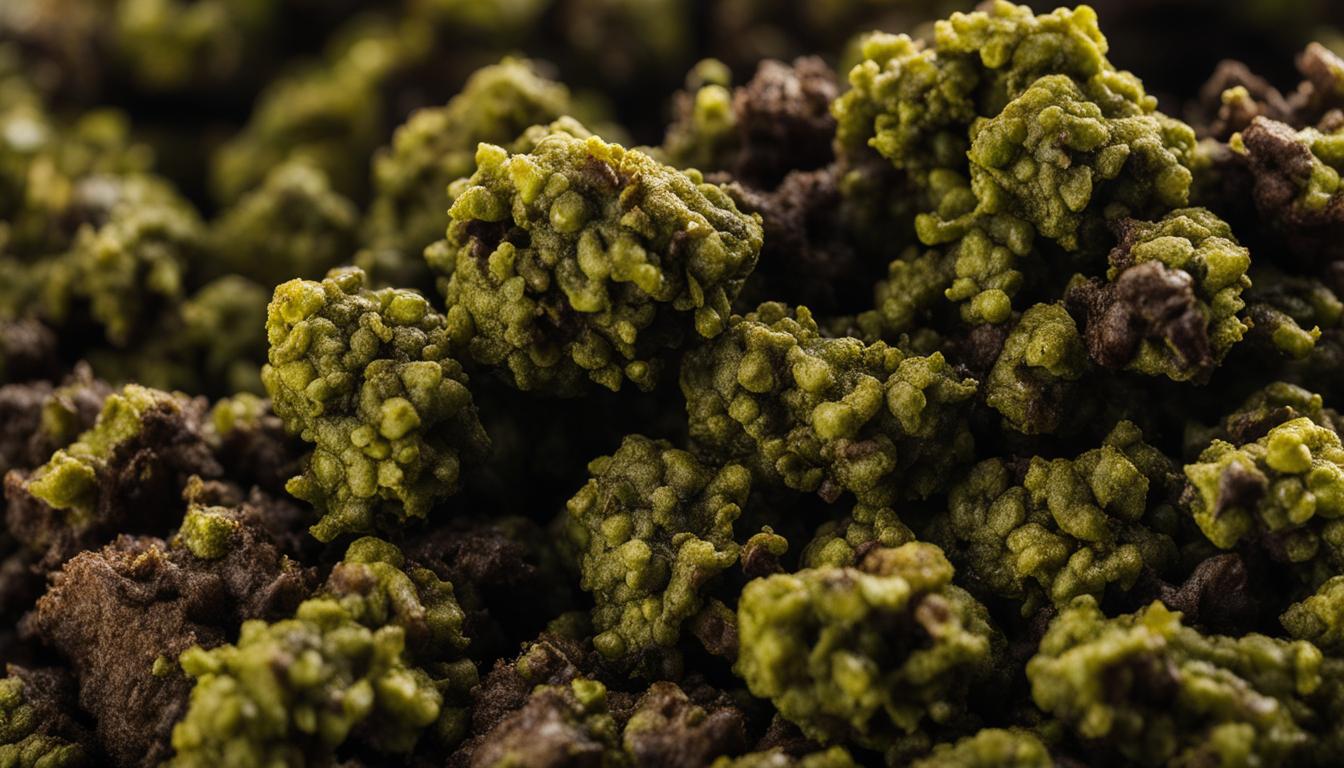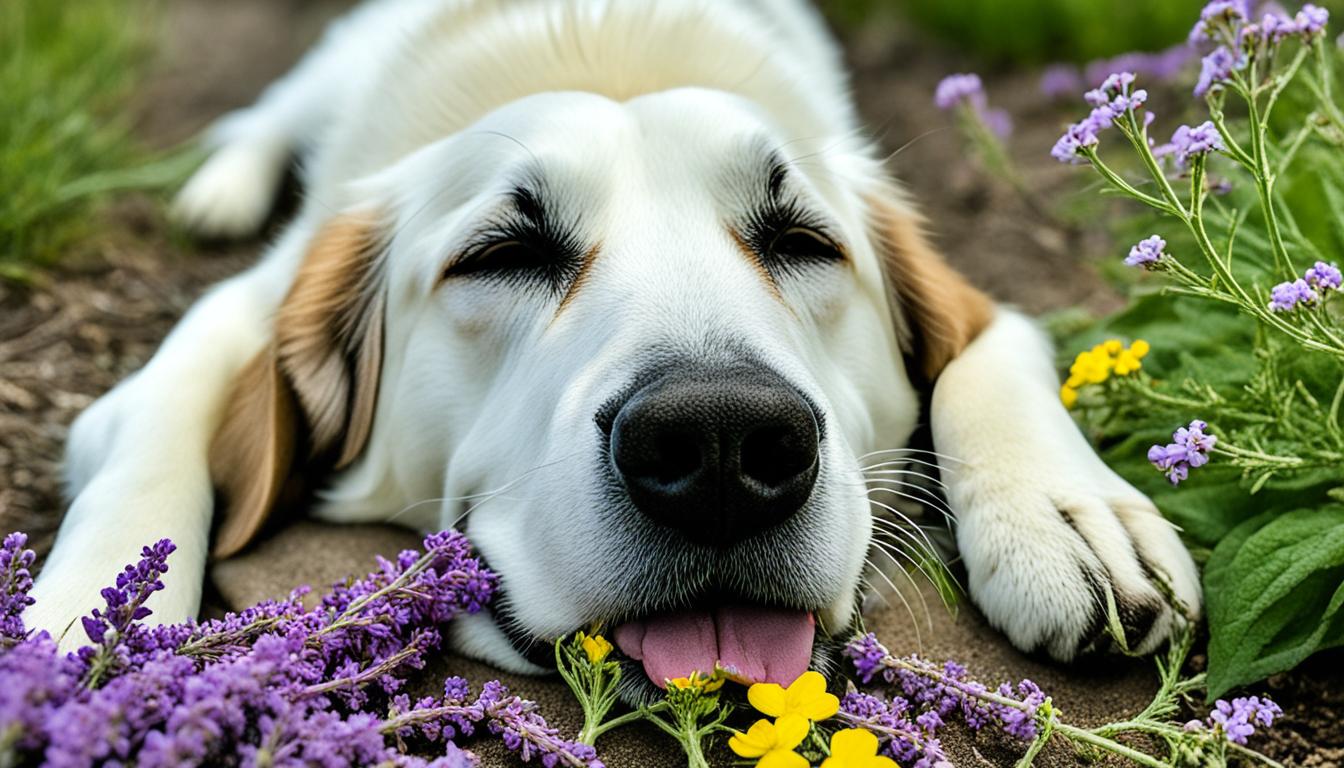The health of our feline friends is paramount, with their oral wellbeing playing a crucial role in their overall quality of life. Feline dental diseases are not just common; they are a prevailing issue that can lead to severe discomfort and systemic health problems if left untreated. It is estimated that a striking 50% to 90% of cats over the age of four suffer from some form of dental disease. A proactive approach to feline dental care, which includes routine checks, scaling, and perhaps most importantly, preventive measures, can help ensure that your cat maintains optimum dental health throughout its life.
Issues such as gingivitis, periodontitis, and tooth resorption are among the most common feline oral health challenges. These conditions can be mitigated, or even avoided altogether, with meticulous care and early detection. This guide aims to shed light on the nuances of cat dental health and provide valuable insights into how owners can best support their pets in maintaining a healthy mouth.
Key Takeaways
- It is critical to identify and address feline dental diseases early to prevent systemic health issues and guarantee a pain-free life for your cat.
- Proactive feline dental care, including regular check-ups and teeth cleaning, is vital in safeguarding against oral diseases.
- Timely intervention and treatments for conditions such as gingivitis, periodontitis, and tooth resorption are key to managing feline oral health effectively.
- Establishing a routine of consistent at-home dental care is indispensable for preventing the onset of dental diseases in cats.
- Understanding the symptoms and consequences of poor oral hygiene can help cat owners take the necessary steps towards ensuring their cat’s dental health.
The Prevalence of Feline Dental Diseases
As our feline companions age, the likelihood of encountering cat teeth problems and cat gum disease increases substantially, presenting a significant concern for pet owners and veterinary professionals alike. Comprehensive insights into the widespread nature of these conditions shine a spotlight on the necessity for targeted dental care strategies.
Statistics and Studies on Dental Conditions in Cats
Research conducted across various veterinary practices has identified that a staggering number of domestic cats suffer from dental diseases, with a prevalence rate that underscores the need for awareness and prevention. These statistics reflect a concerning trend in feline oral health, prompting a call to action for improved dental hygiene routines.
| Age Group | % with Dental Disease | Common Conditions |
|---|---|---|
| 3-6 years | 60% | Gingivitis, Tartar Build-up |
| 7-10 years | 70% | Periodontitis, Tooth Resorption |
| 11+ years | 80% | Advanced Periodontitis, Multiple Tooth Resorptions |
Cat Age and Dental Health Correlation
The relationship between a cat’s age and the health of their teeth is unmistakable, revealing a direct correlation where older cats exhibit higher rates of dental complications. This pattern serves as a poignant reminder that proactive dental care should become progressively more attentive as cats advance in years.
Providing your cat with consistent oral hygiene from an early age could significantly diminish the risk of complex dental issues later in life.
Therefore, integrating regular dental check-ups and preventative measures is crucial for maintaining optimal feline oral health throughout the years.
Feline Dental Diseases Explained
Understanding the dynamics of cat tooth decay and dental tartar in cats is essential for pet owners and veterinarians alike. These conditions often originate from plaque accumulation, which can harden and form tartar, leading to a variety of oral health issues. Recognising the symptoms and choosing the correct course of action is pivotal in preventing the escalation of these diseases.
Tooth decay and tartar can result in severe complications if not addressed in a timely manner. This necessitates a comprehensive approach to oral care, combining home-based prevention with professional dental treatments. The following table summarises the common dental afflictions in felines, their implications, and the recommended interventions:
| Disease | Description | Consequences | Intervention |
|---|---|---|---|
| Gingivitis | Inflammation of the gums | Redness and swelling, possible bleeding | Regular cleaning, dietary changes, specific treatments as directed by a vet |
| Periodontitis | Advanced gum disease affecting the jawbone and tissues | Tooth loss, systemic health issues | Dental surgery, antibiotics, advanced dental care |
| Tooth Resorption | Breakdown of tooth structure starting from the enamel | Pain, difficulty eating, tooth loss | Extraction of affected teeth, pain management |
Specific strategies for managing these diseases include frequent home brushing, utilising dental chews, and regular veterinary check-ups. It is worth noting that early detection and management can significantly improve the prognosis and minimise the need for more drastic measures such as extractions. Therefore, the continued education on the importance of dental health in cats is paramount.
Ultimately, a proactive stance against cat tooth decay and dental tartar in cats is not just about maintaining oral hygiene but about ensuring the welfare and longevity of our feline companions.
Oral Hygiene: Preventing Feline Dental Issues
Maintaining excellent dental hygiene for cats is not only paramount for their overall well-being but also instrumental in circumventing severe dental procedures like cat tooth extraction. Ensuring our feline friends receive regular oral care is a definitive step towards safeguarding their health and quality of life.
Significance of Regular Tooth Brushing
Embarking on a routine of consistent tooth brushing stands as a cornerstone practice in pre-empting oral diseases. This daily ritual greatly diminishes the likelihood of plaque and tartar formation, which can lead to significant dental concerns and may result in the need for surgical interventions.
Toothpaste for Cats: Safety and Selection
Selecting the appropriate toothpaste is critical. Human toothpaste contains fluoride and other ingredients that are toxic to cats. Thus, it’s advised to use toothpaste specially formulated for felines, ensuring their safety and catering to their unique dental requirements.
Dental Hygiene Products for Optimal Feline Oral Health
A plethora of oral hygiene products is available specifically for our feline companions. From specialised diets designed to mechanically clean teeth to water additives and dental chews that aid in controlling plaque, these products have been scrutinised and endorsed by the Veterinary Oral Health Council for their efficacy in promoting dental hygiene for cats.
- Specialised Diets: These diets are formulated to encourage chewing and naturally clean the teeth through their texture and shape.
- Water Additives: Often containing enzymes to combat plaque, these additives can be simply poured into your cat’s drinking water.
- Dental Chews: Specially designed to clean teeth as cats chew, these products also help freshen breath and reduce tartar.
Recognising Signs of Dental Problems in Cats
As a pet owner, being aware of the early indicators of oral issues in your feline friend is paramount, especially when such conditions may ultimately require a cat tooth extraction. It can be challenging to identify these issues, as cats are often stoic animals that do not easily reveal discomfort. However, there are a few telltale signs that suggest the presence of dental maladies, many of which manifest as behavioural changes that attentive pet owners can observe.
- Pawing at the Mouth: A cat frequently touching its face or mouth area can be a signal of discomfort or pain.
- Head Shaking: Similar to pawing, the action of shaking their head persistently may also indicate dental irritation.
- Food Dropping: Watch for difficulty in picking up food or an unusual tendency to drop food from the mouth while eating.
- Difficulty Swallowing: Dysphagia, or difficulty swallowing, can often be associated with pain or abnormalities in the oral cavity.
- Excessive Drooling: While some drooling can be normal, pay attention if it is excessive, particularly if tinged with blood, as this is not a normal presentation.
- Notable Bad Breath: A significant change or worsening in your cat’s breath could be symptomatic of underlying dental problems.
These signs signal a necessity for a professional veterinary evaluation. A tactile examination under sedation allows for a full appraisal of the feline oral health not observable during an alert state. In many instances, dental problems if left undiagnosed, can aggravate to the point where a cat tooth extraction may be the only viable solution.
Table: List of Potential Signs of Feline Dental Issues and Actions Required
| Signs of Dental Issues | Possible Underlying Cause | Suggested Action |
|---|---|---|
| Pawing at the mouth or head shaking | Oral discomfort, loose teeth | Immediate veterinary check-up |
| Food dropping from mouth/difficulty chewing | Gingivitis, tooth resorption | Assessment for pain relief and dental treatment |
| Difficulty swallowing or excessive drooling | Gum disease, foreign body in mouth | Oral examination under general anaesthesia |
| Change in breath odour | Build-up of plaque or tartar, infection | Consideration of professional dental cleaning |
It’s also important to note that dental X-rays might be required to assess the health of the jaw and the roots below the gumline which is crucial before any cat tooth extraction procedure. Early detection of dental disease, interceded by timely veterinary care, can help prevent the need for such invasive procedures and better preserve your cat’s dental wellbeing.
Tackling Tartar: Understanding Dental Calculus in Cats
Ensuring your cat maintains excellent dental health is imperative in preventing dental calculus, commonly referred to as tartar. This hardened plaque can adhere to the surface of your cat’s teeth, creating a strong defence against a toothbrush’s bristles. Tackling this issue is vital not only for aesthetic reasons but also for its significant role in preventing cat tooth decay and further oral complications.
The Formation of Tartar and Its Implications
Tartar formation is a multi-stage process that starts with the seemingly innocuous presence of plaque, a sticky film composed of bacteria. Plaque that is not removed can mineralise into tartar, which firmly affixes to the enamel of your cat’s teeth. Recognisable by its distinctive yellow or brown colouration, tartar not only harbours bacteria but also sets the scene for severe problems such as gingivitis and periodontitis if not addressed promptly. These conditions can lead to symptoms ranging from discomfort to severe pain, negatively influencing your feline friend’s overall welfare.
Professional Cleaning: Scaling and Polishing
In severe cases, professional dental cleaning by a veterinarian is essential. This procedure, commonly involving scaling and polishing, requires anaesthesia, providing a stress-free experience for your cat while enabling the veterinary team to carry out a thorough clean. Scaling scrubs away both plaque and tartar, while polishing smooths the teeth’s surfaces, making them more resistant to future plaque build-up. Our feline companions benefit greatly from these treatments as they provide a clean slate for further preventive care.
Table: Proactive Measures in Maintaining Your Cat’s Dental Health
| Daily Practices | Benefits | Professional Interventions |
|---|---|---|
| Regular tooth brushing with cat-specific toothpaste | Prevents plaque formation | Annual dental check-ups |
| Introducing dental health diets | Reduces tartar build-up, promoting stronger teeth | Scaling and polishing procedures |
| Dental toys and treats designed to clean teeth | Stimulates saliva production, neutralising acids | X-rays to detect underlying conditions |
It is incumbent upon us as cat owners to incorporate daily dental hygiene practices into our routine. By fostering good habits such as regular tooth brushing and the use of specialised diets, we play an active role in impeding the onset of tartar and safeguarding our beloved pets from the perils of tooth decay and more serious dental maladies.
Feline Dental Diseases: Gingivitis and Periodontitis
Cat gum disease presents a complex challenge to feline oral health. Two such common conditions are gingivitis and periodontitis, each stemming from the same initial cause – plaque accumulation. Gingivitis, noticeable through symptoms such as red, swollen gums and occasional bleeding, can be a precursor to the more destructive periodontitis if left untreated. It’s a stark reminder of the necessity of vigilant dental care in cats.
The stark difference between gingivitis and periodontitis lies not just in their severity, but in their potential consequences. Gingivitis is often reversible with early intervention, while periodontitis may lead to irreversible outcomes including tissue, tooth, and bone loss. Understanding this distinction is key for prompt and effective treatment.
| Condition | Symptoms | Impact | Treatment Approach |
|---|---|---|---|
| Gingivitis | Inflamed, red gums Swelling Occasional bleeding |
Can be reversed with proper dental hygiene and care | Regular brushing, professional cleaning, antibacterial treatments |
| Periodontitis | Severe inflammation Gum recession Loose or lost teeth |
Irreversible tissue and bone damage leading to tooth loss | Advanced dental procedures, potential tooth extraction, and ongoing management |
This comparison underscores the critical nature of maintaining good oral health practices and seeking veterinary assistance as soon as any symptoms of cat gum disease appear. Regular checkups and cleanings form the cornerstone of preventing these diseases, highlighting that prevention is indeed better than cure, especially regarding your cat’s oral wellbeing.
Cat Tooth Resorption: A Dangerous Dental Dilemma
Tooth resorption in cats is a dental condition that silently afflicts many felines, often going undetected until it becomes a significant health concern. This widespread problem is notorious for its capacity to cause severe discomfort and necessitate medical interventions such as cat tooth extractions. Understanding and effective management of this condition are crucial for the prevention of further oral health complications resulting from accumulated dental tartar in cats.
Identifying Symptoms of Tooth Resorption
Tooth resorption is a clandestine adversary in feline oral health, frequently remaining unnoticed until it reaches an advanced stage. It typically presents as erosive lesions at the gum line that may appear as a subtle pinkish discoloration. Vigilant cat owners should be on alert for tell-tale signs such as:
- Reluctance or refusal to eat, particularly hard foods
- Painful reactions when the mouth or face is touched
- Visible distress or changes in behaviour, indicating discomfort
- An increase in drooling, occasionally accompanied by blood
- Missing teeth, as advanced resorption can lead to tooth loss
Early detection is imperative, and any observed abnormalities should prompt an immediate consultation with a veterinarian.
The Extraction Process for Affected Teeth
When it comes to treating tooth resorption, the severity of the lesion dictates the course of action. In the event of substantial damage, a cat’s dental health may leave veterinarians with no choice but to perform an extraction. This surgical procedure typically involves:
- Diagnosis via X-rays to determine the extent of root involvement
- General anaesthesia to assure a painless and stress-free experience
- Surgical removal of the tooth, possibly including crown amputation
- Appropriate post-operative care to ensure proper healing
The intricacies of cat tooth extraction call for skilled veterinary professionals and a comprehensive follow-up regimen to alleviate discomfort and encourage recuperation.
| Stage of Resorption | Treatment Option | Follow-Up Care |
|---|---|---|
| Early Lesions (Minimal Damage) | Observation and Possible Minor Intervention | Regular Monitoring, Dietary Adjustments |
| Advanced Lesions (Moderate to Severe Damage) | Surgical Tooth Extraction | Pain Management, Soft Diet, Antibiotic Course |
| Excessive Damage (Loss of Integrity) | Complete Surgical Extraction with Crown Amputation | Extensive Follow-Up Visits, Analgesics, and Special Care Instructions |
For victims of tooth resorption, the extraction often proves to be a rescinding of the painful predicament imposed by this all-too-common affliction. Prompt, precise, and passionate care will secure not only relief from immediate discomfort but also the continuation of an overall quality of life for our feline friends.
Contributing Factors to Dental Disease Development in Cats
Understanding the intricacies of cat dental health can be daunting, yet it’s essential to discern the multifarious elements contributing to dental maladies. A cat’s oral wellbeing is subject to various influencing factors and recognising these can greatly assist in preventive care. Poor dental hygiene for cats is often implicated in the development of dental disease, but it certainly doesn’t act in isolation. Let’s delve into the contributing factors that increase the peril of dental disease in felines.
Dental issues in cats can stem from the anatomical setup of their dentition – notably tooth alignment. Malocclusion can precipitate undue plaque accumulation and subsequent gingival problems. Diet, too, plays a pivotal role; a regimen lacking in texture that facilitates natural teeth cleaning can be detrimental. Infectious diseases such as Feline Immunodeficiency Virus (FIV), Feline Leukemia Virus (FeLV), and Feline Calicivirus (FCV) also take their toll on feline oral health, exacerbating susceptibility to periodontal conditions.
Genetic dispositions may subtly influence a cat’s propensity for dental afflictions, while the chemical makeup of a cat’s oral environment – the pH levels of saliva, for instance – might alter the risk profile for certain dental diseases.
- Genetic Factors
- Tooth Alignment
- Dietary Habits
- Infectious Diseases
- Oral Hygiene Practices
- Saliva Chemistry
Preventative action, including rigorous brushing routines and specialised nutrition, can prove to be the bulwark against these insidious contributors to oral disease. Tailored diets that promote mechanical cleaning of teeth, alongside dental chews that help scrub away plaque, epitomise the proactive measures against the onslaught of dental disease in our feline friends. It’s clear, then, that upholding rigorous dental hygiene for cats isn’t just about the act of cleaning itself, but also involves consideration of these broader contributory dynamics.
Advanced Dental Conditions: Addressing Severe Cases
In the realm of feline healthcare, advanced dental conditions, notably cat gum disease and cat tooth decay, are pressing concerns that could gravely impact the life quality of our pet cats. Such conditions go beyond the usual tartar and plaque and may require involved treatment procedures. Understanding the gravity and nuances of these severe dental issues is pivotal for pet owners and veterinarians alike.
Understanding Stomatitis and its Impact on Cats
Stomatitis, a form of cat gum disease, involves extensive inflammation of the mouth, often causing immense pain and discomfort for the affected feline. The condition is characterized by red, swollen gums and sometimes ulceration, and is believed to be connected to an overactive immune response to the plaque bacteria in the mouth. This can severely affect a cat’s ability to eat and their overall wellbeing.
Managing Severe Periodontal Diseases in Feline Health
When considering severe periodontal disease, we understand it to be an advanced stage of cat gum disease resulting in the destruction of the structures supporting teeth. Without intervention, it advances to a critical point where tooth loss is inevitable. Comprehensive management often involves a multi-faceted approach:
- **Dental Extractions**: Severely affected teeth may need to be removed to alleviate pain and halt the progression of the condition.
- **Thorough Cleaning**: Scaling and root planing to remove plaque and tartar beneath the gum line can be essential in managing these conditions.
- **Targeted Therapies**: Antibiotic therapy and anti-inflammatory medications can be effective in managing infection and discomfort.
- **Close Monitoring**: Regular check-ups are necessary post-treatment to prevent recurrence and ensure ongoing oral health.
As daunting as severe feline dental conditions can be, understanding their complexities and the rigorous attention required for their management can help ensure our cats continue to lead comfortable lives despite these challenging diseases.
Conclusion
In summary, the health implications of feline dental diseases are non-negligible and demand the attention and care of vigilant pet owners. Early identification and decisive action are the two pillars supporting the fortification of cat dental health. This encompasses an array of endeavours from the rudiments of routine tooth brushing to the expertise summoned during professional veterinary care.
Ensuring feline dental care extends beyond cursory glances or intermittent checks. It requires a steadfast commitment to regular assessments and intervention when red flags are raised. This means not only possessing the knowledge of potential issues but also applying that knowledge through hands-on preventive measures and, when needed, the discernment to seek expert advice and treatment.
Finally, it is the synergy between consistent at-home dental maintenance and authoritative veterinary assistance that stands as the bedrock of preventing, managing, and ultimately overcoming dental afflictions in cats. Guardians of these beloved creatures must therefore be conscientious and proactive in preserving the oral wellbeing of their feline friends, ensuring they lead complacent and comfortable lives.
FAQ
What are common feline dental diseases?
The most common feline dental diseases include gingivitis, periodontitis, and tooth resorption. These can lead to significant oral health issues, pain, and discomfort in cats.
How prevalent are dental conditions in cats?
Dental conditions are extremely prevalent among domestic cats, with studies suggesting between 50% and 90% of cats over four years old experiencing some form of dental disease.
Are older cats more susceptible to dental health problems?
Yes, age plays a significant role in the development of dental diseases in cats. As cats grow older, they are at a higher risk of experiencing dental issues.
Why is regular tooth brushing important for cats?
Regular tooth brushing is vital for maintaining good oral hygiene in cats, helping to prevent plaque accumulation, dental diseases, and potentially avoiding the need for tooth extractions.
What type of toothpaste should I use for my cat?
It is essential to use toothpaste specially formulated for cats, as human toothpaste can be toxic to them. Cat-specific toothpaste will be safe and often comes in flavours that are appealing to felines.
What are some signs of dental problems in cats?
Symptoms of dental issues in cats can include pawing at the mouth, difficulty eating, drooling, bad breath, a reluctance to eat, and visible discomfort.
What is dental tartar, and why is it a problem for cats?
Dental tartar, or calculus, is a hard mineral deposit that forms on cat teeth from plaque that’s not removed. It can contribute to tooth decay and gum disease, compounding oral health problems.
What does professional dental cleaning for cats involve?
Professional dental cleaning typically involves scaling to remove plaque and tartar, followed by polishing to smooth the tooth surface. This procedure often requires anaesthesia for cats.
How does gingivitis differ from periodontitis in cats?
Gingivitis is the inflammation of the gums and is often reversible with proper oral care. Periodontitis is a more severe condition that affects the deeper structures of the teeth and can lead to tooth loss.
What is tooth resorption in cats, and what are its symptoms?
Tooth resorption in cats is a common disease where the tooth structure begins to break down and is absorbed by the body. Symptoms include reluctance to eat and pain, which may be evident by a change in the cat’s behaviour.
What is involved in the tooth extraction process for cats?
Tooth extractions can range from a straightforward removal to more complex procedures such as surgical extractions depending on the tooth condition. Aftercare is crucial to ensure appropriate healing and recovery.
What factors contribute to the development of dental disease in cats?
Contributory factors include diet, genetics, poor oral hygiene, tooth alignment, and certain infectious diseases. Cats fed mostly moist food or those with misaligned teeth may be at higher risk.
What are advanced dental conditions in cats?
Advanced dental conditions in cats include stomatitis, a severe inflammation of the mouth, and periodontitis, which involves the loss of bone and soft tissue around the teeth.
How can cat owners prevent dental diseases in their pets?
Prevention includes regular tooth brushing, providing dental health diets or chews, and regular veterinary check-ups, which include dental examinations and cleanings.






